1963 Studebaker Lark Daytona Wagonaire Is Today's Bring a Trailer Pick
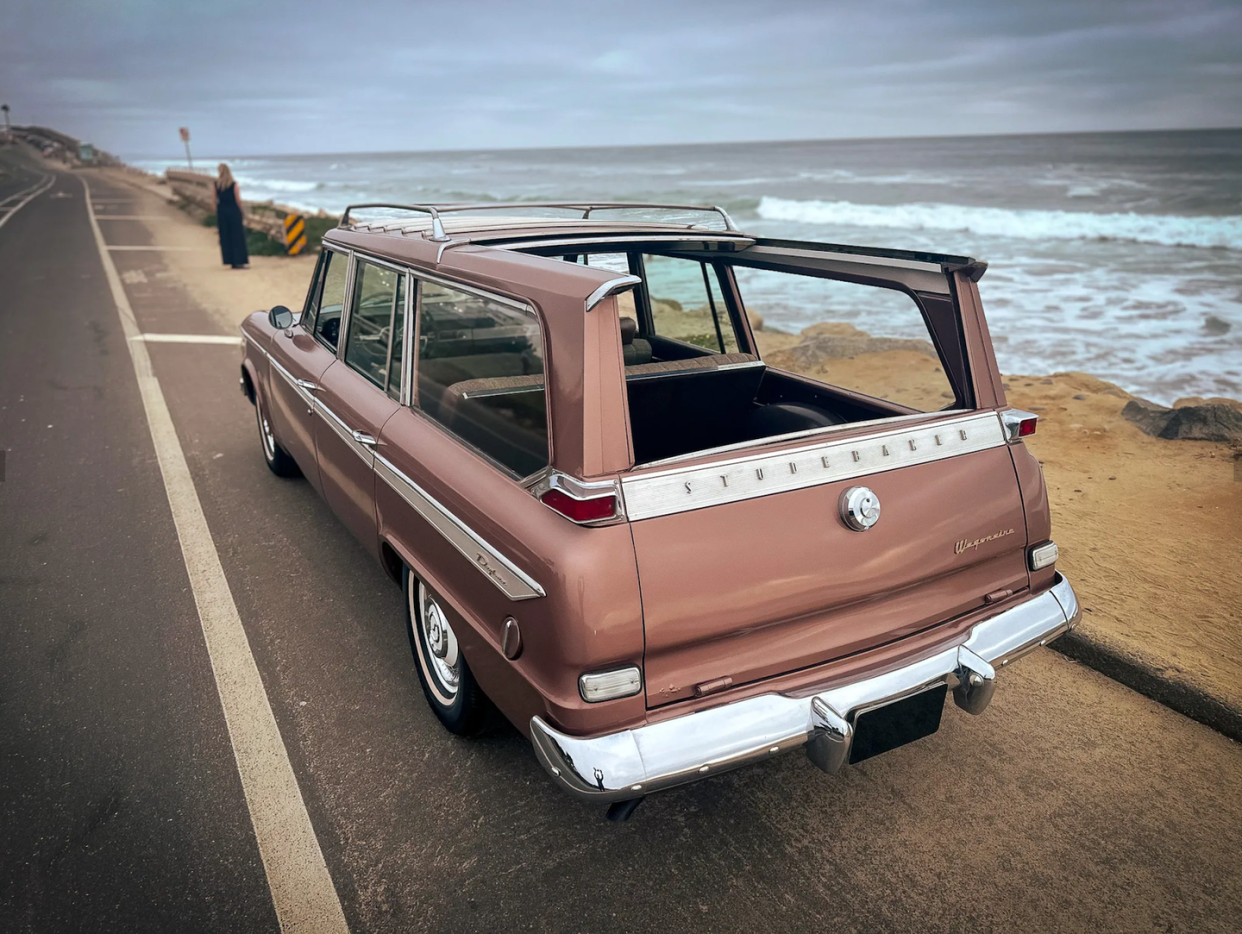
Introduced for 1963, the Studebaker's Wagonaire was designed by Brooks Stevens and featured a retractable rear roof section to accommodate oversized cargo.
Created to help juice flagging Studebaker sales, the Wagonaire roof was innovative but plagued by sealing issues early on. The car never sold as well as hoped, and fewer than 20,000 were made through 1966.
Most Wagonaires used straight sixes or a 259-cubic-inch V8, but this restored example has the optional 289 V8, good for 225 horsepower.
Short on cash but not creativity, Studebaker's early 1960s product blitz swung for the fences. Charismatic new CEO Sherwood Egbert, a finance guy appointed to diversify the company away from cars, ended up diving head-first into reinvigorating South Bend's car biz. It didn't work out, but this period gave us some glorious machinery, including the Avanti, the Gran Turismo Hawk, supercharged Larks, and one of the most interesting station wagons of the 1960s: the Studebaker Lark Wagonaire.
These cars didn't save Studebaker, but this 1963 Lark Daytona Wagonaire for sale on Bring a Trailer (which, like Car and Driver, is part of Hearst Autos), is proof that it wasn't for lack of trying. This Wagonaire is also about as nice as one of these longroofs gets thanks to options including Studebaker's potent 289-cubic-inch V-8, power disc brakes, and a gorgeous color: Rose Mist.
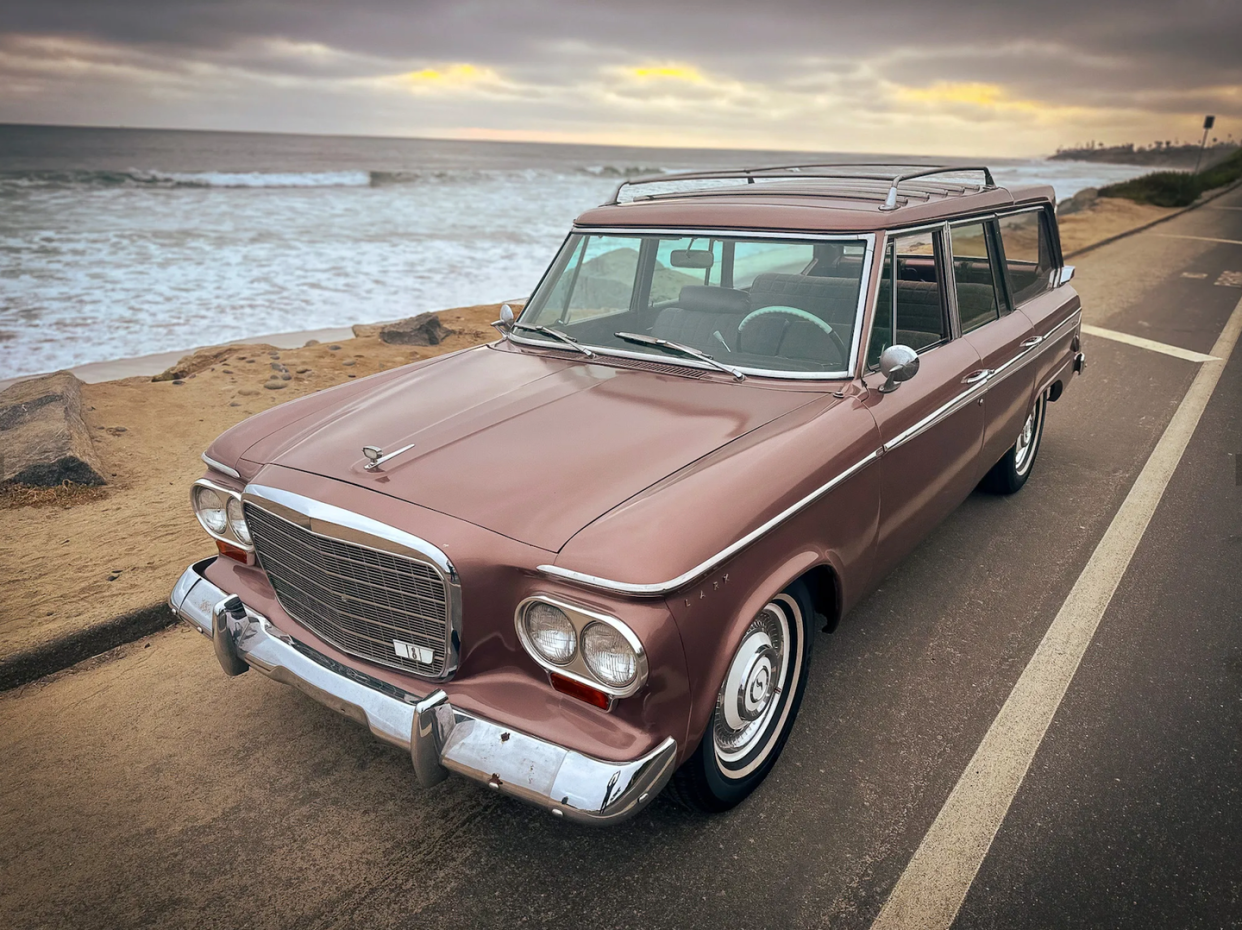
Just days after his appointment on December 28, 1960, Egbert phoned Brooks Stevens and Raymond Loewy. Only 40 years old, he'd come to Studebaker from McCulloch Motors, a maker of chainsaws and parent company of Paxton Superchargers. Stevens had consulted for McCulloch, and Egbert had met Loewy while on vacation in Palm Springs. He threw down gauntlets for both, asking Loewy to design the Avanti in 13 months, and Stevens to restyle the existing Hawk and Lark in only six, with a combined budget of just $7 million.
Studebaker was used to crazy turn times and shoestring budgets by then. The Lark, which saved the company from insolvency in 1959, was created in only seven months by sawing off parts of the company's 1958 design and restyling it as a compact. By late 1960, the Big Three's compacts were biting into Lark sales, and change was needed. Stevens delivered, giving the '62 Larks understated, faintly European looks. He then refined the design for 1963 with updated bodies that eliminated the thick pillars and wraparound windshields left over from '58.
The most crucial body for '63 was the Wagonaire, a reinvention of the Lark Wagon with an innovative new feature: a sliding rear roof inspired by the Scimitar, a concept car Stevens had created in 1959 for an aluminum manufacturer. The sliding section moved forward and into a pocket under the roof while the tailgate window rolled down, creating a huge open area for tall, bulky items and an open-air feel not unlike a convertible top. There was also an optional tailgate step, just like on today's pickups.
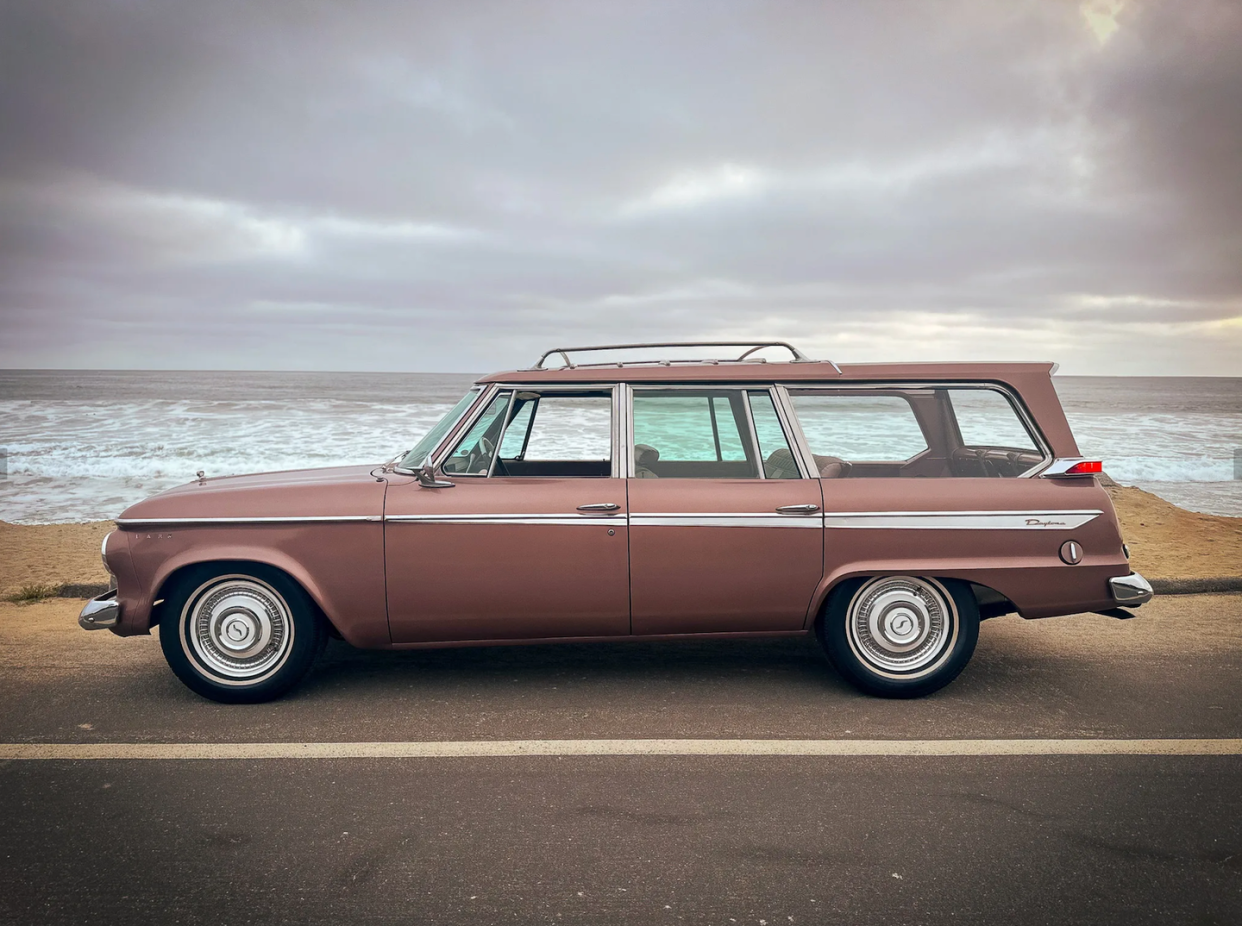
Under the skin, lots of old Studebaker hardware remained, but Egbert's efforts had improved other things too. He'd enlisted Paxton to develop the supercharged R1 and R2 packages and sourced optional front disc brakes from Bendix. In 1963, Studebaker was the only U.S. automaker to offer disc brakes. Studebaker's 112-horsepower 170-cubic-inch "Skybolt" Six was standard, and there were two V-8s, the 259-cubic-inch 180-hp "Power Thrust" and the 225-horse "Thunderbolt" 289, optional on Daytona two-doors, convertibles, and Wagonaires.
The Wagonaire debuted to great fanfare in September 1962, but early cars soon returned to the dealership with water leaks. Studebaker quickly redesigned the weatherstripping and set about fixing the cars, but the bad press muted buyers' enthusiasm, so much so that in January of '63, the company issued a fixed-roof version as a delete option. Studebaker sales fell 21 percent in '63, but 11,915 Wagonaires were built. Some were bought by photographers and film companies for their obvious mobile camera platform potential.
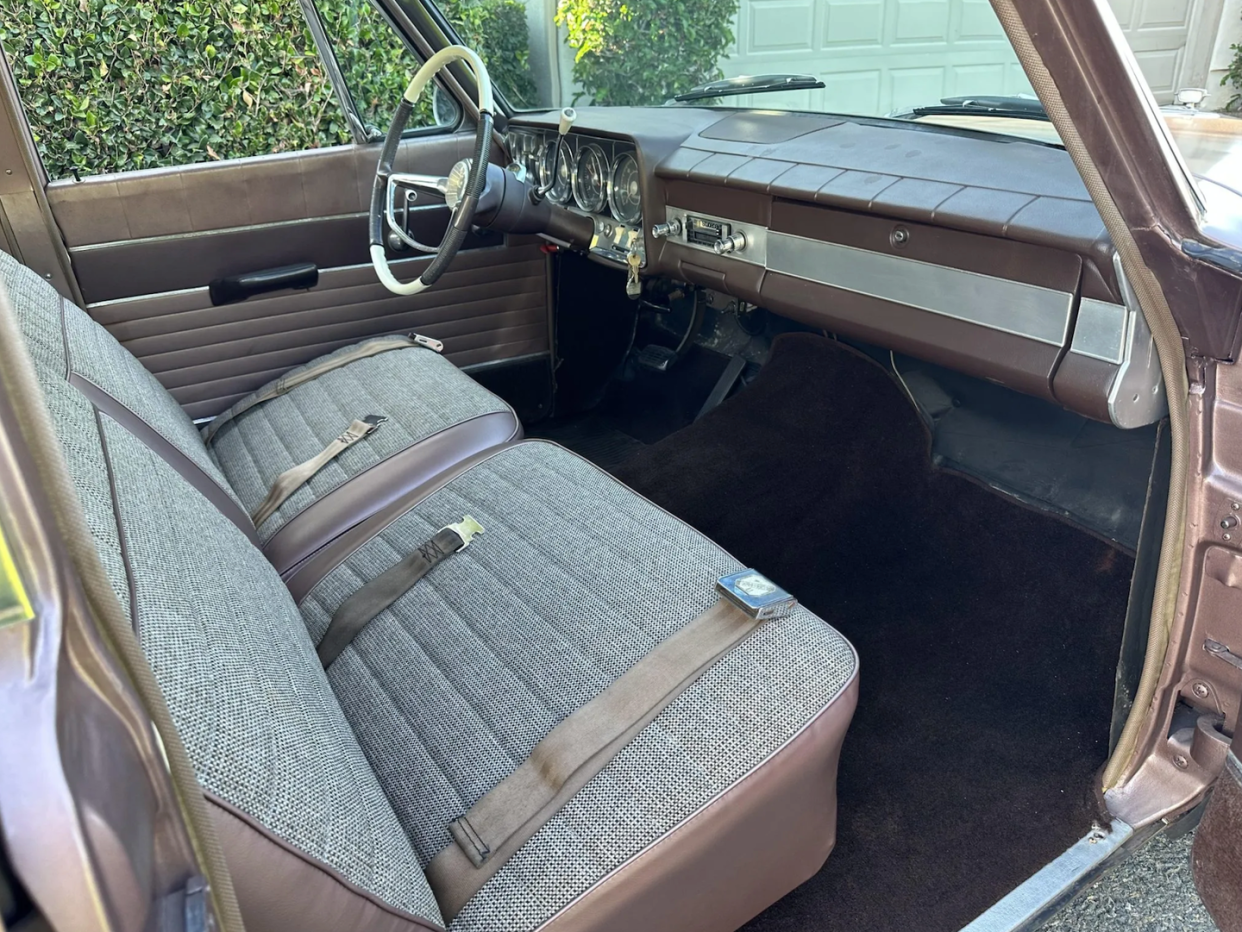
The Avanti and Egbert's other changes weren't enough to turn the tide. Studebaker's assembly plant closed that December, though Lark and Wagonaire production continued in Canada until 1966. Ironically, Egbert's efforts to diversify Studebaker ensured it survived until 1979, just not as a carmaker. Surprisingly, nobody tried the sliding roof idea again until GMC's 2004 Envoy XUV.
Just under 20,000 Wagonaires were made in total, but the '63 is the only one with this classic face. With the 289 V-8 and disc brakes, like this one, the Lark was quite a performer in its day and still drives like a pretty modern car. This particular example has also had lots of expensive work done, including extensive rust repair and a repaint, new engine seals, a rebuilt transmission, and a new fuel tank.
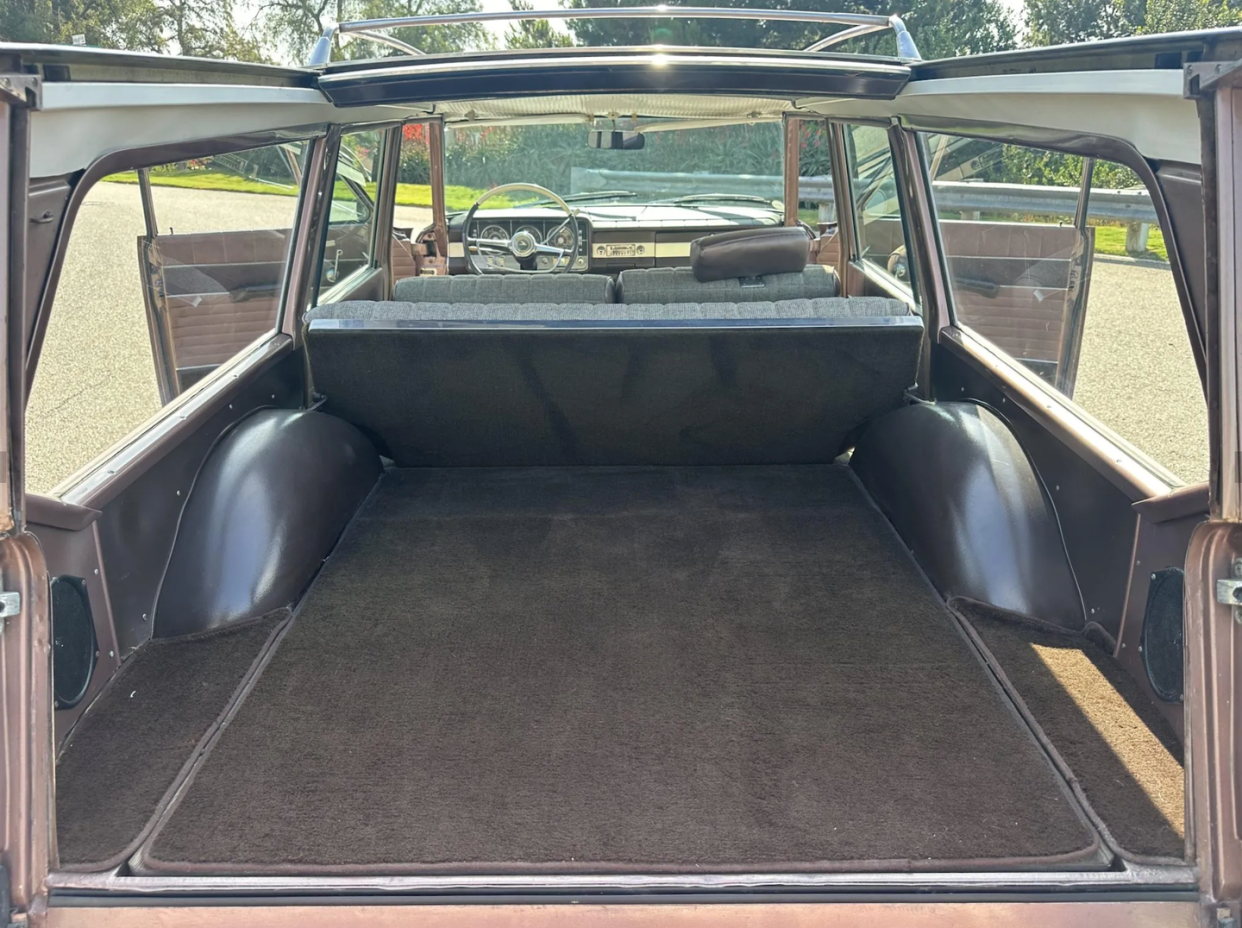
Plus, there's the look. The brown, pink, and burgundy interior is as cool as the paint, and Brooks Stevens' chrome detailing still looks regal today.
If you want a rose-tinted piece of wagon history, the auction ends July 31.
You Might Also Like





